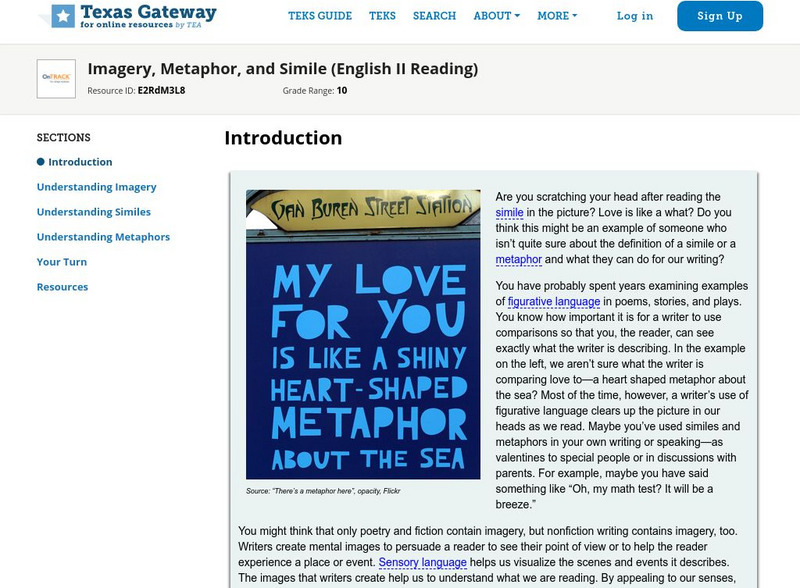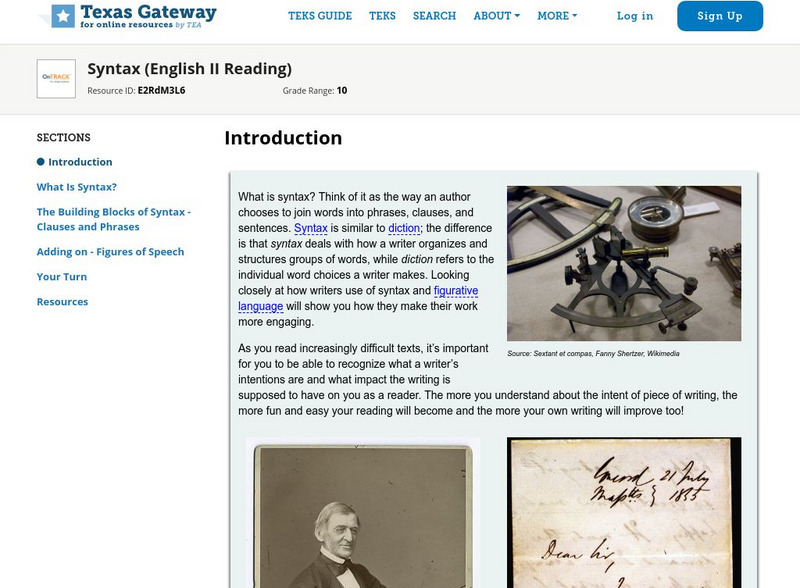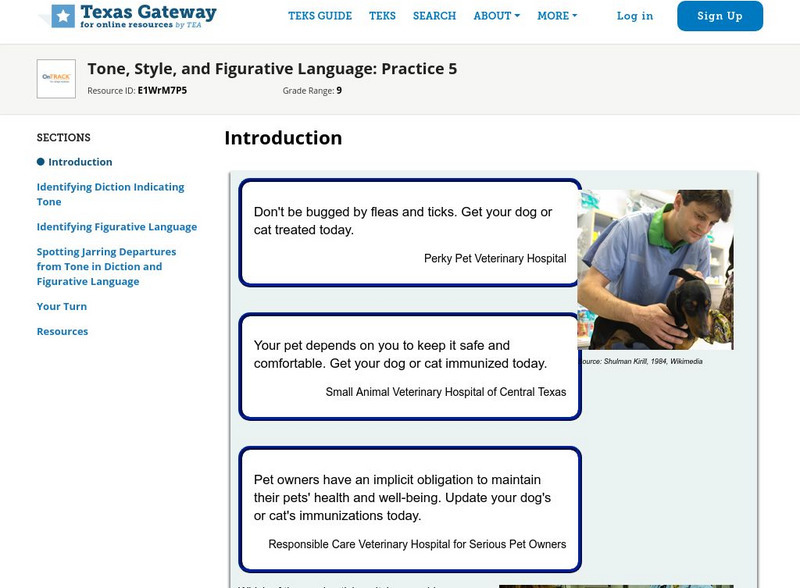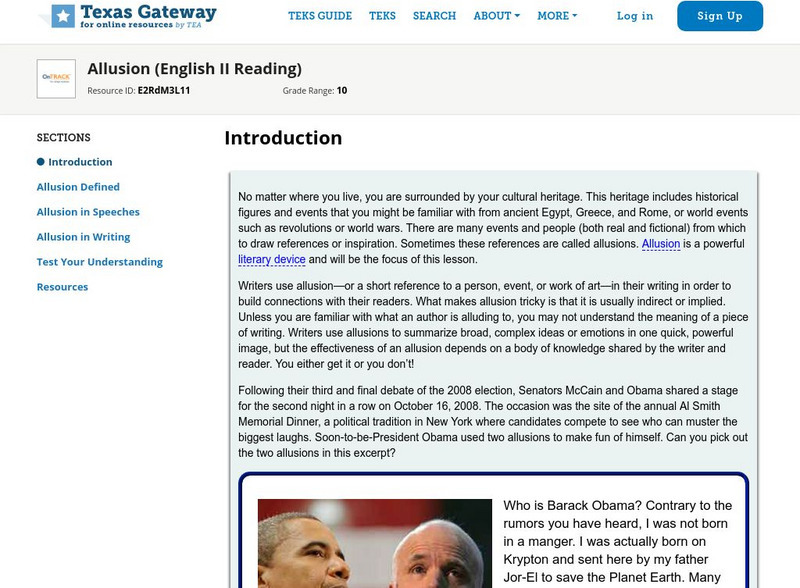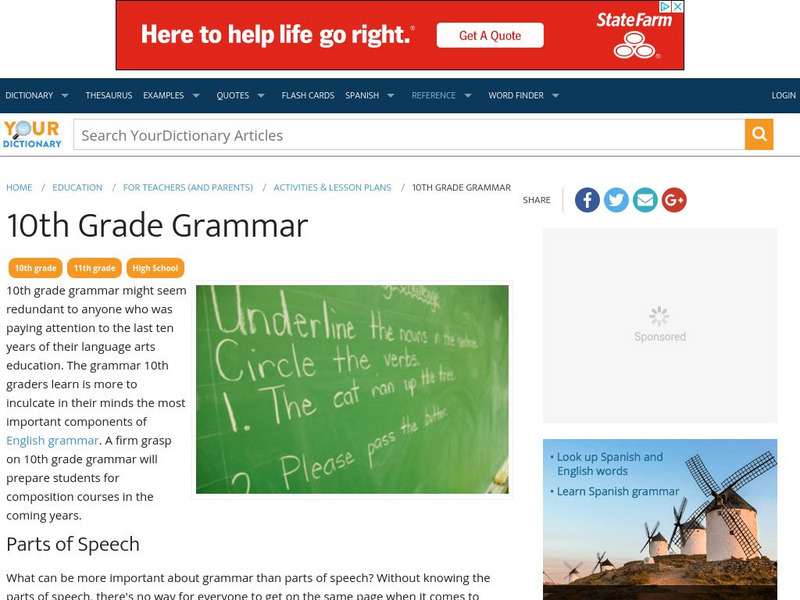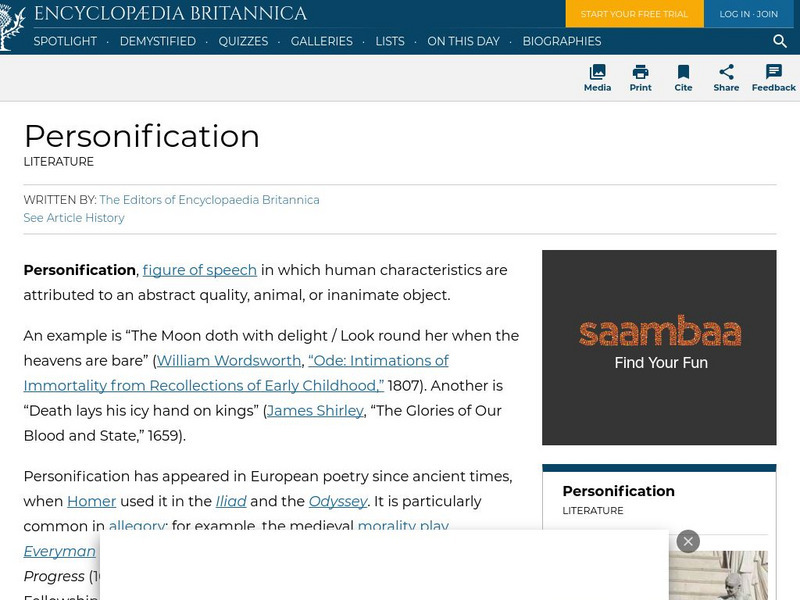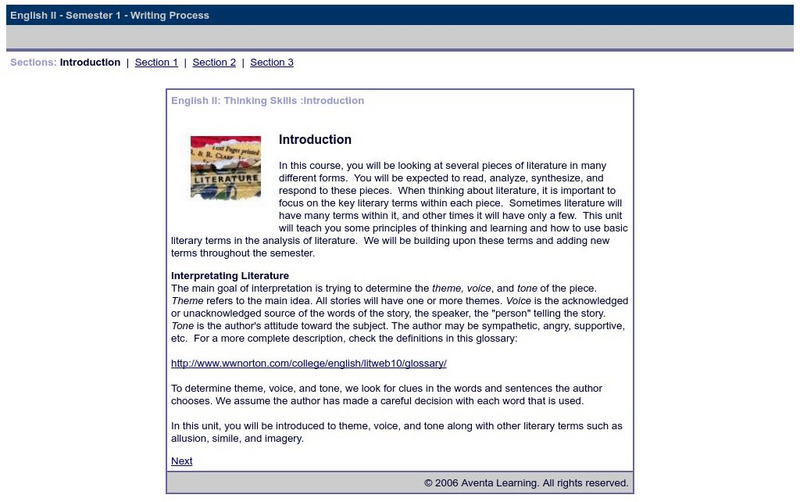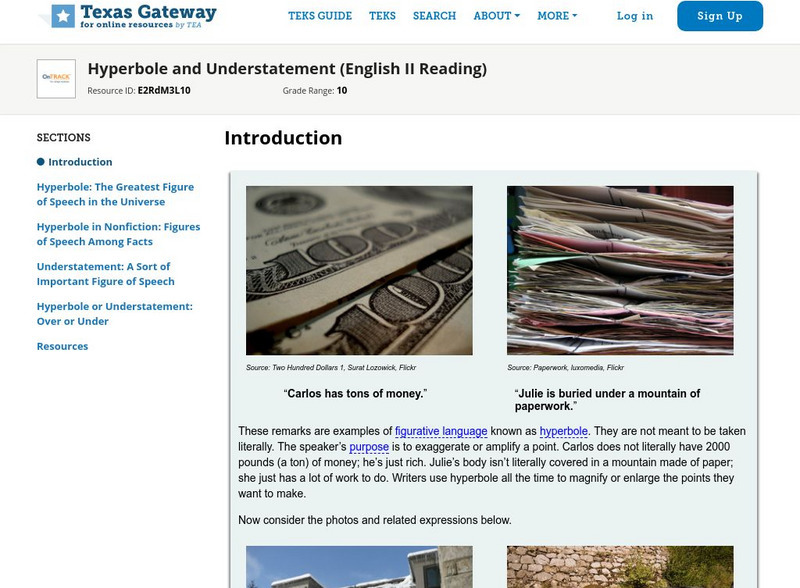Grammarly
Grammarly Blog: Idioms and Their Meanings
An explanation and examples of idioms and their geographic ties.
Washington State University
Washington State University: Epigram/epigraph/ Epitaph/epithet
This site gives a definition of the word "epigram." It also includes a few examples of epigrams.
Sophia Learning
Sophia: Oxymorons
This slideshow focuses on oxymoron by defining the term, discussing its purpose, and providing examples. L.9-10.5a Figures of Speech
University of Victoria (Canada)
The U Vic Writer's Guide: Literary Term: Paradox
Definition of paradox with example from the poetry of John Donne and links to related terms such as oxymoron and metaphysical conceit.
Other
Study Guide: Literary Terms: English 11
This is a glossary of literary terms designed for English 11: semester 1 and semester 2.
Texas Education Agency
Texas Gateway: Simile and Metaphor
Explain the effect of similes and extended metaphors in literary text.
Texas Education Agency
Texas Gateway: Importance of Figurative Language: Practice 3 (English I Reading)
Read a text and understand how the figurative language of a literary work contributes to its historical and cultural setting.
Texas Education Agency
Texas Gateway: Literary Terminology: Practice 5 (English I Reading)
[Accessible by TX Educators. Free Registration/Login Required] You will practice using terminology critical for comprehension, interpretation, and analysis of poetry, drama, and fiction.
Texas Education Agency
Texas Gateway: Hyperbole and Understatement (English Ii Reading)
[Accessible by TX Educators. Free Registration/Login Required] Analyze hyperbole and understatement in nonfiction.
Texas Education Agency
Texas Gateway: Imagery, Metaphor, and Simile (English Ii Reading)
Evaluate the role of imagery, metaphor, and simile in literary nonfiction such as speeches and essays.
Texas Education Agency
Texas Gateway: Diction and Tone (English Ii Reading)
Evaluate the role of diction and tone in literary nonfiction such as speeches, essays, and other forms.
Texas Education Agency
Texas Gateway: Syntax (English Ii Reading)
Evaluate the role of syntax in literary non-fiction such as speeches, essays, and other forms.
Texas Education Agency
Texas Gateway: Tone, Style, and Figurative Language: Practice 5
Mark examples of figurative language and the diction that indicate tone.
Texas Education Agency
Texas Gateway: Allusion (English Ii Reading)
You will be able to analyze the function of allusion in literary texts.
University of Kentucky
Kentucky Classics: A Glossary of Rhetorical Terms With Examples
Rhetorical terms are defined on this site by the Kentucky Division of Classics. With sentence examples of each in English and Greek. Also related links to Perseus.
Lumen Learning
Lumen: Grammar: Try It: Other Parts of Speech
This is a non-graded practice activity in which students identify conjunctions, prepositions, and articles in a passage.
Love To Know Media
Your Dictionary: 10th Grade Grammar
This article focuses on what grammar 10th graders need to know to be successful in the upper grades and college. These include the following: parts of speech, sentence structure/syntax, types of sentences, types of clauses, parallelism,...
Encyclopedia Britannica
Encyclopedia Britannica: Literature: Personification
Explains what personification is and gives examples. Includes links to related articles on symbolism, elements of rhetoric, fables, figure of speech, and allegory.
Department of Defense
Do Dea: Thinking Skills
In this self-guided course, you will be looking at several pieces of literature in many different forms. This unit will teach you some principles of thinking and learning and how to use basic literary terms in the analysis of literature....
Ted Nellen
Cyber English (By Ted Nellen): Literary Terms
This is an extensive glossary of literary terms.
Texas Education Agency
Texas Gateway: Analyze How Author's Style and Syntax Support Meaning
In this lesson, we will discuss how an author's syntax reveals meaning and makes ideas stay with the reader. Practice exercises are included.
Texas Education Agency
Texas Gateway: Literary Text: Hyperbole and Understatement
[Accessible by TX Educators. Free Registration/Login Required] In this lesson, you will learn to recognize hyperbole and understatement in nonfiction.
Other
St. Edward's University: Devices: Assonance/consonance
Defines and compares the use of assonance and consonance in poetry, with examples.
Other
Fu Jen Univ.: Poetic Elements: Denotation and Connotation: Figures of Speech
This site gives short definitions of the terms denotation and connotation. Also gives definitions for many figures of speech. Finally, includes discussion and study questions for a few poems at the bottom of the page. L.11-12.5b Nuance











